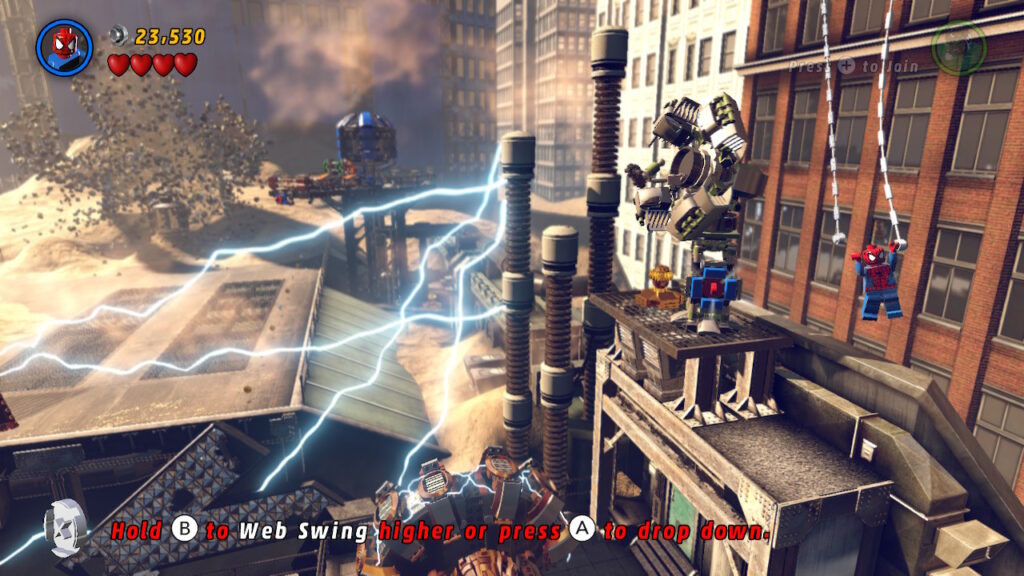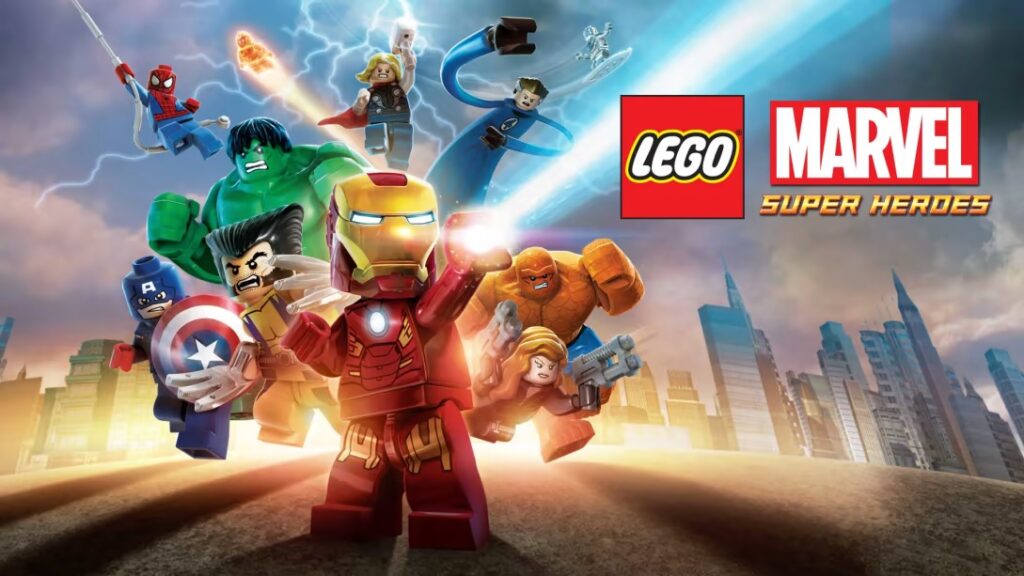
I love Legos. I buy them for my son, I play with them here and there, and I have a small minifigure collection. They’re fantastic and the licensing Lego has done to revitalize themselves is outstanding. I also love Marvel Comics. I’ve been buying them since I was a kid, and while maybe the newer stuff isn’t quite what I’d like it to be, the characters are still great and the nostalgia factor is real. Combine the two, and you get Lego Marvel Super Heroes from Traveller’s Tales Games and publisher Warner Bros. Games, the latest Lego game released on the Switch. Note that I don’t say the newest, since Lego Marvel Super Heroes is actually from 2013! Somehow, this is the one Lego game that didn’t manage to get ported to the Switch, at least until now!
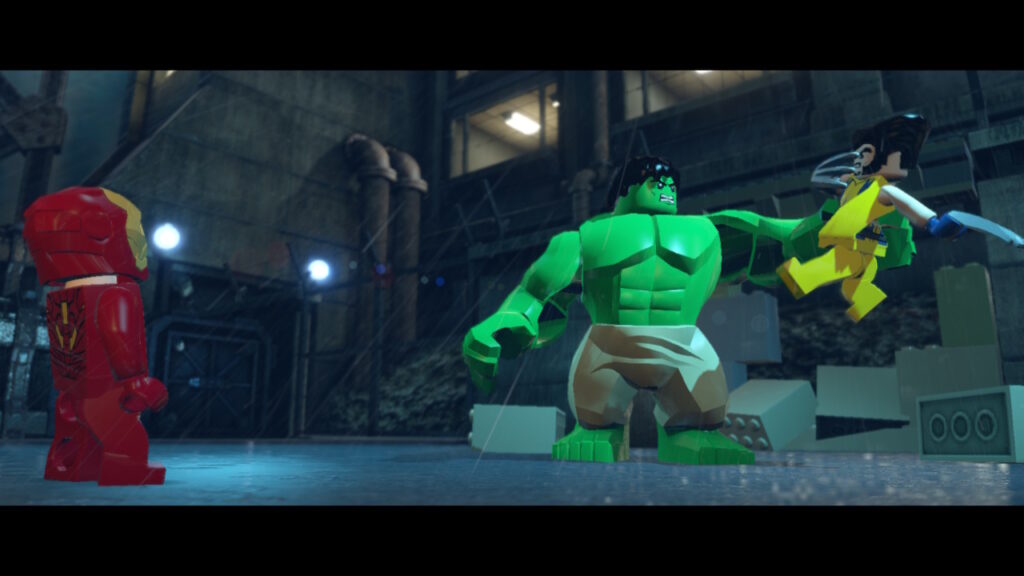
Before my son, I didn’t have much experience with the Lego game franchise. They were released well into adulthood for me and there were simply other things to play. Now that I have a young son, I’ve been trying them out bit by bit with him and I’ve got to say, they’re definitely a mixed bag. We started on Lego Star Wars: The Complete Saga, moved on to Lego Batman, and now here we are with Lego Marvel Superheroes. Having played all of these recently, there are a lot of things to be said about the Lego game formula, but let’s take a look at Lego Marvel Super Heroes (Lego MSH for short) first.
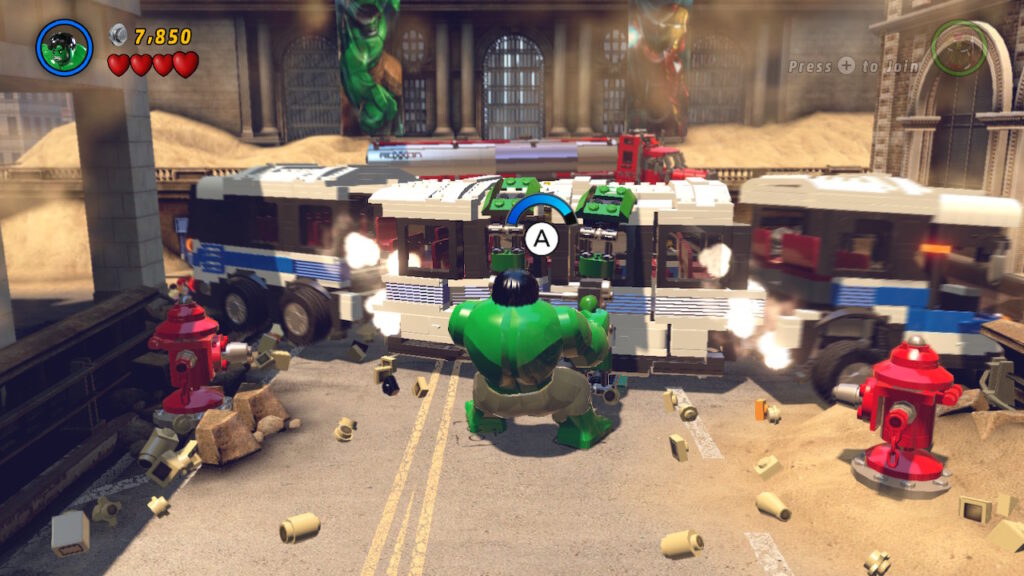
The game begins almost immediately with a fairly long cinema sequence in which Doctor Doom shoots down the Silver Surfer while he’s hunting planets for Galactus. Classic Marvel plotting in my book! The Surfer crashes to earth, scattering Cosmic Bricks all over the world which the villains are frothing to collect so they can rule the world Pinky & the Brain style. As plots go, it feels like it’s out of the 60s, and for a kids game, that’s a good thing! Not long after, it’s time to get down to business and controlling Iron Man and the Hulk, it’s time to get that first Cosmic Block back from the Sandman and the Abomination! If you’re not familiar with the characters, don’t worry, it won’t really matter. There’s a ton of fan service here, especially with the 155 characters available to unlock in Lego MSH. No, I haven’t unlocked them all. There’s just far too much to do!

The general formula for Lego MSH is pretty straightforward. Each level starts with a plot point which introduces a level where a team of super-heroes from the Marvel universe works together, using their powers to overcome obstacles and fight the villains to regain the cosmic blocks. Creative use of each power set is mandatory if you wish to progress through the game too. Can’t figure out what to do? Smash everything. EVERYTHING. Eventually you’ll find blocks that can be built into structures which allow you to progress. They’re there, trust me. There’s a ton of hidden stuff in the game too, including a wide array of vehicles that you can unlock by completing missions and buying them with studs, and a huge number of characters you can switch between to unlock previously inaccessible parts of the campaign levels. There are even hidden minikits and a series of Deadpool bonus missions for the truly dedicated!

Suffice it to say that there’s a lot to do in Lego MSH. And while there’s a lot to do, it’s not always easy to do it. Let’s talk about the controls first. Lego MSH has very imprecise controls, making it easy to jump off platforms, buildings, and other structures, often to your untimely demise. Since there are no lives in the game, that doesn’t really matter much though. It’s just irritating. And that’s kind of what all the controls are like in Lego MSH. Irritating. The game switches between Y and A buttons to charge different attacks and actions, forces you to painstakingly target a variety of structures with weapons and attacks, and has rough collision detection for combat. It’s even had to jump on a ladder, something that’s a staple of most 3D games. What’s going on here? Well, this is a perennial problem for most Lego games. I’m sure a lot of people look back on them with nostalgia, but man, these are some rough level designs and controls.
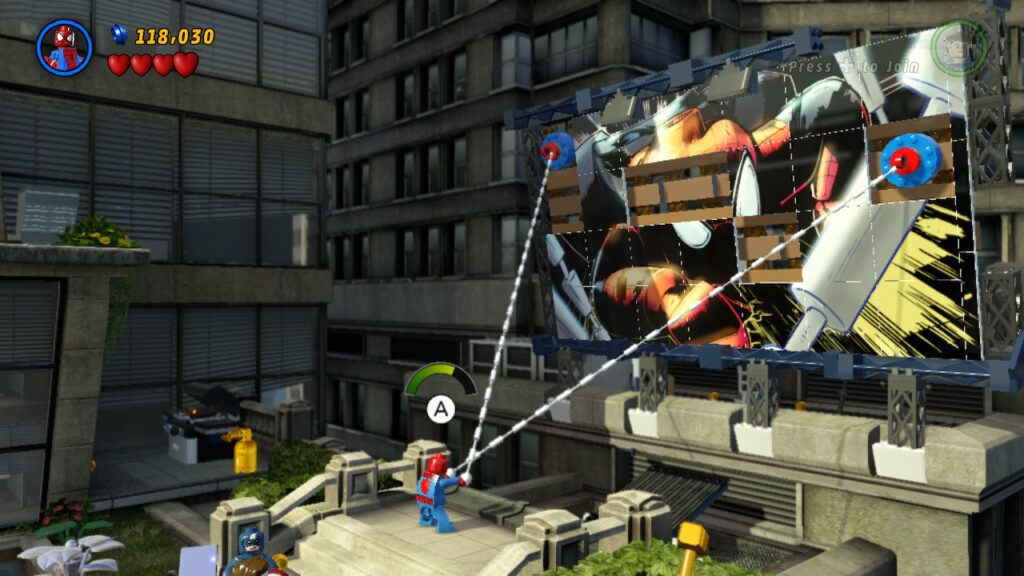
My son recently played through most of the Lego Star Wars games for example. But he didn’t do it without help (he’s just turned 6). Why is that? Because, while you’d think that they would be designed for kids to play, the jumps were precise and challenging, the puzzles were incredibly non-intuitive, and the camera is, well, a hot mess. Now, that’s a Lego title from 2007. Lego MSH is from 2013, six years later, and most of those issues still stand. Traveller’s Tales has been using the same template for years because the games sell no matter what. Unfortunately, that doesn’t make the games fun or easy to play for kids.

In fact, even in Lego MSH, I had trouble figuring out what to do on more than one occasion. Levels direction was non-existent and as an adult gamer, smashing stuff is tedious and boring so I’d often miss the items that could be rebuilt to progress because why would I want to stand there punching a dumpster in a game? I wouldn’t. My son has the same problem playing. He simply can’t tell if something can be broken or not and the in-game tutorials are so Spartan that they don’t sink in well for him. Add to that the need to use unique movements like Iron Man’s flight and Spider-Man’s webbing among many others, and the requirement to be familiar with each character’s powers in order to fulfill optional goals and you end up with a game that’s too hard for the target audience and too boring for adults that would play it for nostalgia. It’s a lose-lose unless you just want to let loose on some digital bricks. Maybe that’s a thing for some people? I don’t know. Regardless, it’s hard to care much about the story through the 15 levels of Lego MSH when you’re constantly growling incoherently at the opaque level design.

It’s really unfortunate too, because the quality and care that went into design of the visuals is clear. Heroes and villains look awesome, the game is chock full of excellent, hokey voice-overs, and the overall design elements are spectacular. There’s a co-op mode letting a second player jump in, a free play mode for each level that unlocks after initial completion, and each character has awesome special attacks. Load times are quite good, even on the Switch, and even the music is fun. In short, everything about Lego MSH is awesome, except for the actual game itself.

In short, Lego Marvel Super Heroes is a robust game with a fairly solid 12 hours of gameplay (more if you get stuck, mind you!) plus an absolute ton of unlockables that will take you a good 30 or so hours to fully explore if that’s your thing! But it’s also a game that’s designed for casual gamers in mind, ones that just want to dink around for a bit, enjoy some light story, smash some bricks, drive vehicles around for no reason, and generally play with digital Legos. There’s nothing wrong with that. It’s awesome if that’s your thing. But if you’re a serious gamer looking for a cohesive gaming experience, you’re likely to find Lego Marvel Super Heroes more than a bit lacking, and that’s unfortunate. With a license this awesome, there’s no reason that gameplay has to be minimized or even non-intuitive. The Lego games could definitely use some sprucing up and modernization to bring them to a AAA level. As it is, they feel like equal parts fun and shovelware, and that’s a shame. I really wanted to love Lego Marvel Super Heroes, but it’s just not a great game. It’s a decent game, it ticks all the boxes for most players, but that ephemeral fun factor just isn’t really there, and that’s not just me speaking, it’s my son too (though he didn’t say ephemeral). If you (or your child) is a Lego fanatic and a Marvel fan, you won’t go wrong here in terms of content. But don’t be surprised if they might need a bit of a helping hand here and there to figure out a puzzle or pathway!

This review was based on a digital copy of Lego Super Heroes provided by the publisher. It was played on a Nintendo Switch in both docked and undocked modes and played equally well in both. Lego Marvel Super Heroes is also available for Xbox One, PS4, and PC.
